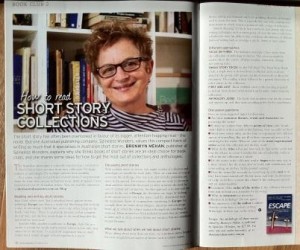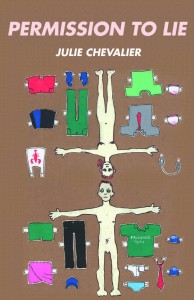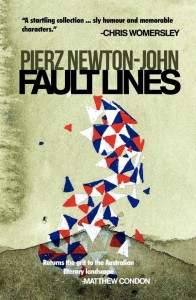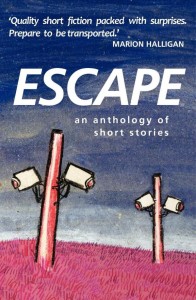In Part 1, I asked some of our top reviewers how they felt about the task of reviewing short fiction. In Part 2, I ponder why it is that Book Clubs may shy away from discussing collection and anthologies, I ask the opinion of some short fiction writers and finally, I provide a few tips and approaches for Book Clubbers. A shorter version of the following blog post appeared in the September issue of Good Reading magazine.
 The Australian short story is currently experiencing a renaissance. Never before have we seen so many short story collections (by single authors) or anthologies (by multiple authors) available on the market.
The Australian short story is currently experiencing a renaissance. Never before have we seen so many short story collections (by single authors) or anthologies (by multiple authors) available on the market.
As a writer, reader and publisher of short stories, I am passionate about the form and, curious to find out more about its appeal, I have interviewed over fifty Australian writers.
Reading and writing short stories
Irma Gold, whose story ‘Just a suburban street’ appears in our anthology, Escape, says that as a reader she likes that she can finish a story in one sitting.’ On the bus, over a cup of tea, lying on the beach. There is a particular pleasure in that complete slice of time, and the best stories linger in the mind long after the last word has been read.’
Jennifer Mills, another contributor to Escape, finds that as a writer, it is both the ‘nearly mathematical tidiness and its risk,’ that attract her to the form. ‘I can pull off imaginative feats in short stories which I would struggle to hold together in a novel.’
Discussing short stories
With multiple stories to discuss, are collections and anthologies suitable for book clubs? There are a number of ways to overcome this challenge. One way is start with the particular and move to the general. For instance, choose just one story to discuss in detail and then extend the discussion to other stories in the book by way of contrast and comparison. Another approach is to start with the general. In the case of Escape, the anthology published by Spineless Wonders, the discussion can begin by looking at the variety of ways in which the stories (and the illustrations) treat the title theme. There are, for instance, stories about refugees, runaways and marriage break up in which ‘escape’ is the subject matter. Other stories have been included because they are written in forms such as crime, science fiction and romance which are considered ‘escapist’ literature.
When talking about more than one story, we sometimes move beyond the more straightforward aspects of fiction (such as subject matter, theme, setting and character) and end up talking about the techniques. This is especially the case with contemporary short stories where writers experiment with a range of techniques.
Sound daunting? Chances are, your book club already talks about writing techniques such as whose point of view the story is told from, whether the story has shifts in time and about the inclusion of different forms of writing such as newspaper articles, letters or diary entries.
Julie Chevalier, author of Permission To Lie, believes that what makes the short story very suitable for discussion is that the endings are often enigmatic. ‘There will be clues in the story that hint at what might happen after the story ends,’ she says. ‘The author leaves space for the reader to ponder, even participate .’
Pierz Newton-John, author of Fault Lines, believes that they are challenging because they do not satisfy in the complete, explicit way of novels or movies. ‘The key,’ Pierz says, ‘ is subtlety. Good short stories sit subtlely on the mind after one has finished them. They pervade the intellect and the emotions, suggesting associations and meanings the way a fine wine suggests cinnamon or vanilla.’
 Different approaches
Different approaches
Focus on three – the facilitator nominates three stories from the collection or anthology to discuss. The selection might be used to show the variety of subject matter, characters, settings and writing styles.
Single story focus In the UK-based Short Story Book Club, a single story is chosen from a collection to be read out aloud to the group with pauses at particular intervals to allow for discussion. The reading is then followed by a general discussion of other stories in the collection.
First and last – book clubbers come to the meeting prepared to defend their choices of most and least favourite stories from the collections.
Anthology judge –the book club members vote for the winner and runners up, as if they were awarding prizes for the contributors.
Discussion questions
Here are some suggested topics for discussion:
Are there common themes, events and characters that preoccupy the writer?
If stories are written from different points of view (male/female, adult/child or in first, second or third person), how successful are they?
Short story writers often use the form to experiment with different aspects of storytelling. But not all of these experiments prove to be satisfying for the reader. What are some of the more experimental styles used in this collection and do they work?
What do the titles tell us and how well do they set the scene and tone for what is to come? Consider the title of individual stories as well as the collection as a whole.
Do the stories in the collection tend to begin in the same way or is there variety? Are the stories slow to build, with introduction and scene-setting, or do they hit the ground running?
Does the writer like to tie everything up neatly at the end, or to leave issues unresolved? Do the stories end with the abruptness of a clap or do they resonate like a hum? Is the ending unexpected and yet understandable?
Comment of the order of the stories. Is the collection best read in a particular order or is it fine for browsing?
What do reviewers have to say about the collection or anthology? Do you agree?
Are there interviews with the author available? Does he or she have a website or blog? What light do these shed on the stories?
